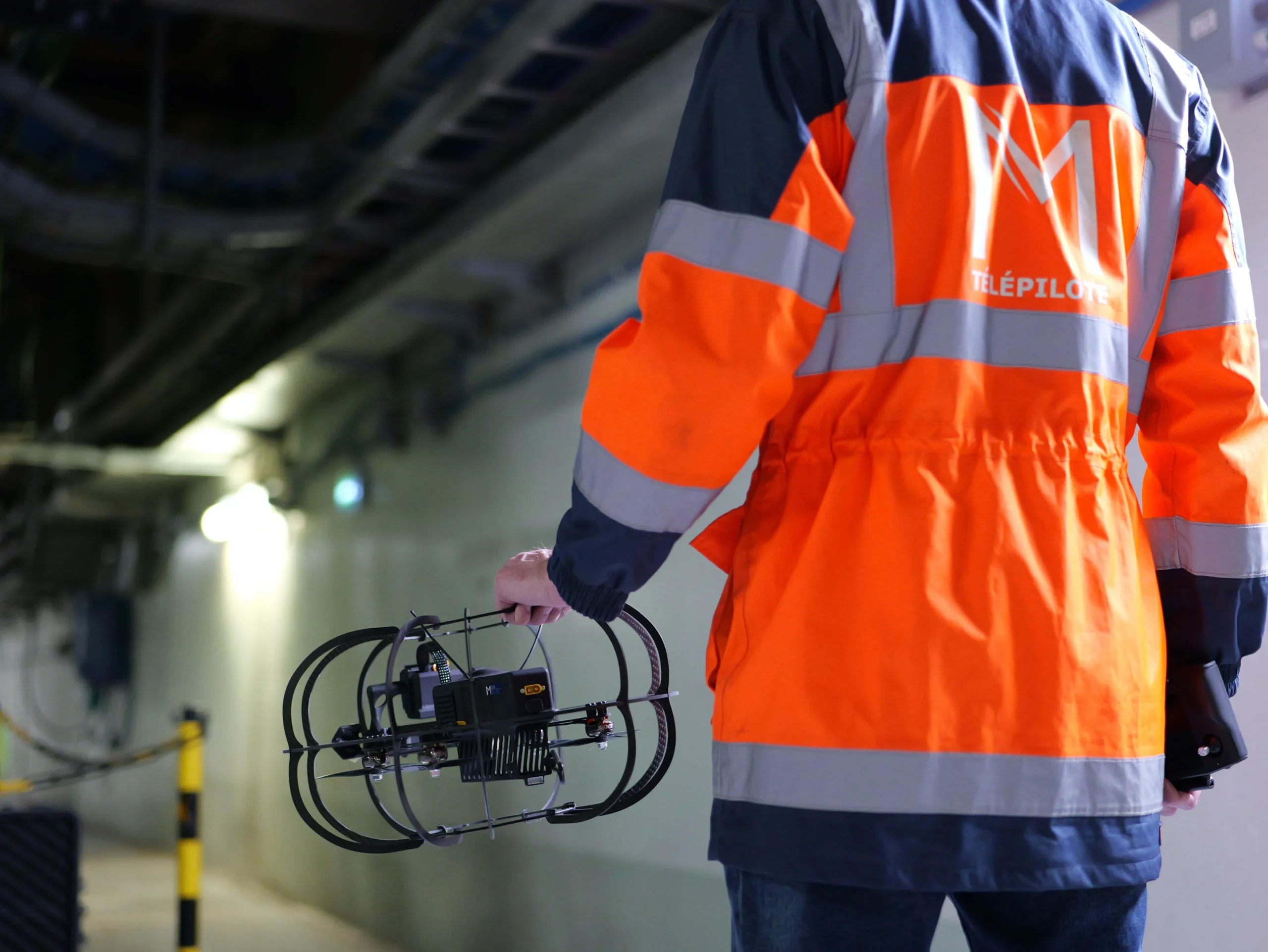Today, the Stereo2 is the ideal tool for traversing pipes for TV inspection, reducing the risk of incidents, cutting costs and reducing personnel.
The inspection of underground networks such as sewers and stormwater drainage is a necessity for cities. As networks age, they are increasingly in need of inspection and maintenance.
Thanks to the development of its technical solutions, such as the Stereo2 aerial vector, Multinnov is helping to find solutions for inspecting a very large proportion of these collectors, manholes, pits and other structures with a diameter of 450 or more that need to be monitored and maintained.
Safety :
Safety for companies working in confined spaces is of paramount importance because of the potential risks to workers' health and safety. Confined environments can include spaces such as tanks, reservoirs, tunnels, ducts, trenches and other confined spaces where there may be a concentration of hazards, such as toxic gases, lack of oxygen, extreme temperatures, fire or explosion hazards, and other physical dangers. Inspections can be dangerous, and the Stereo 2 is an innovative system designed to enhance safety in confined spaces. Thanks to its advanced features, it offers several significant advantages.
Save time and money:
It enables companies to save on protective equipment such as SCBAs (self-contained breathing apparatus), but also to dispense with CATEC training for most of their staff. This limits the costs and procedures involved for companies, and enables smaller structures to meet more ambitious specifications.
Time constraints are sometimes a problem in today's industrial world, and companies are more likely to use robotic solutions to save inspection time.
In fact, pipe inspections take a long time to set up, clean the pipes, find qualified personnel, train them if necessary, and acquire safety equipment.
All these tasks represent a major time constraint, easily avoided with Stereo2.
Efficiency :
The use of inspection robots such as the Stereo2 is therefore a natural choice for the sanitation sector. Equipped with visual inspection cameras, it speeds up the inspection process, enabling faster progress through pipes and reducing the need for manual intervention. It's also worth mentioning that the Stereo2 is splash-proof, making it ideal for this type of intervention. Third-party inspection data analysis software can automatically spot and identify faults, enabling operators to process information more quickly and make more effective decisions.
In conclusion, conducting an inspection with Stereo 2 represents a significant advance in confined space safety, by eliminating the need to enter SCBA equipment and CATEC personnel limiting costs and personnel, Stereo 2 takes on the most critical challenges encountered in these complex environments. With its ability to provide remote detection, Stereo 2 offers a proactive approach to managing potential hazards, reducing danger to workers and improving responsiveness in the event of an emergency. By integrating advanced technologies, the Stereo 2 represents a step forward in industrial safety, offering a better balance between worker protection and operational productivity in confined environments.


